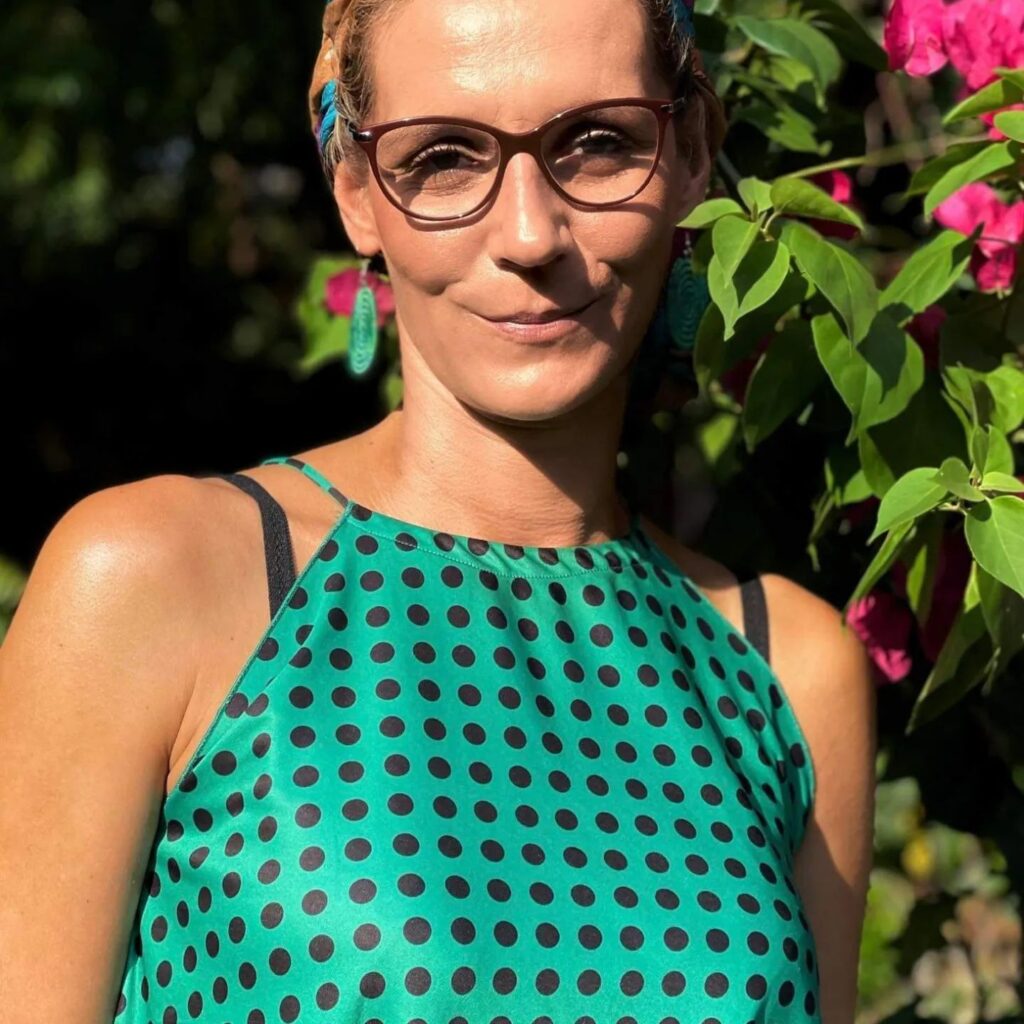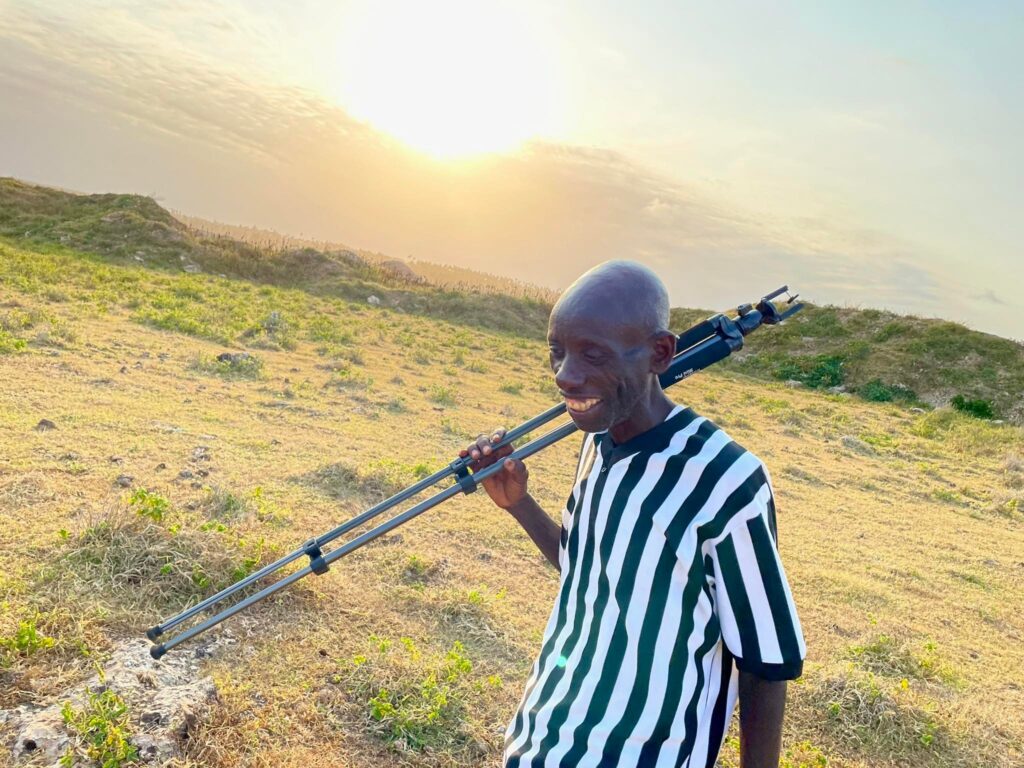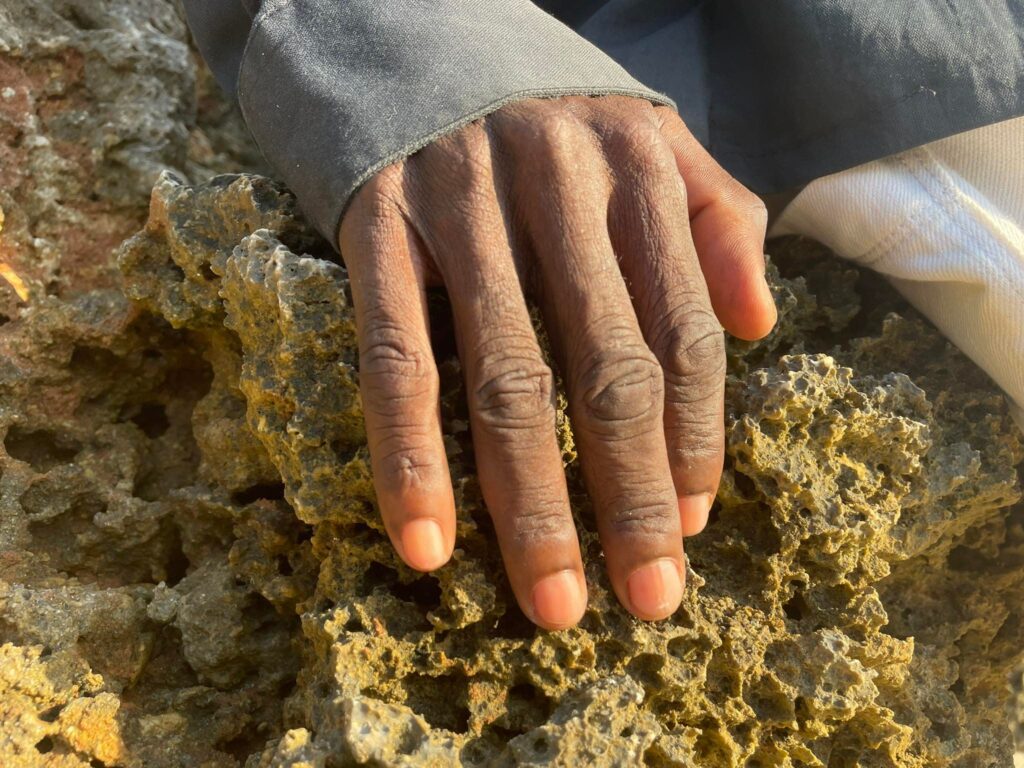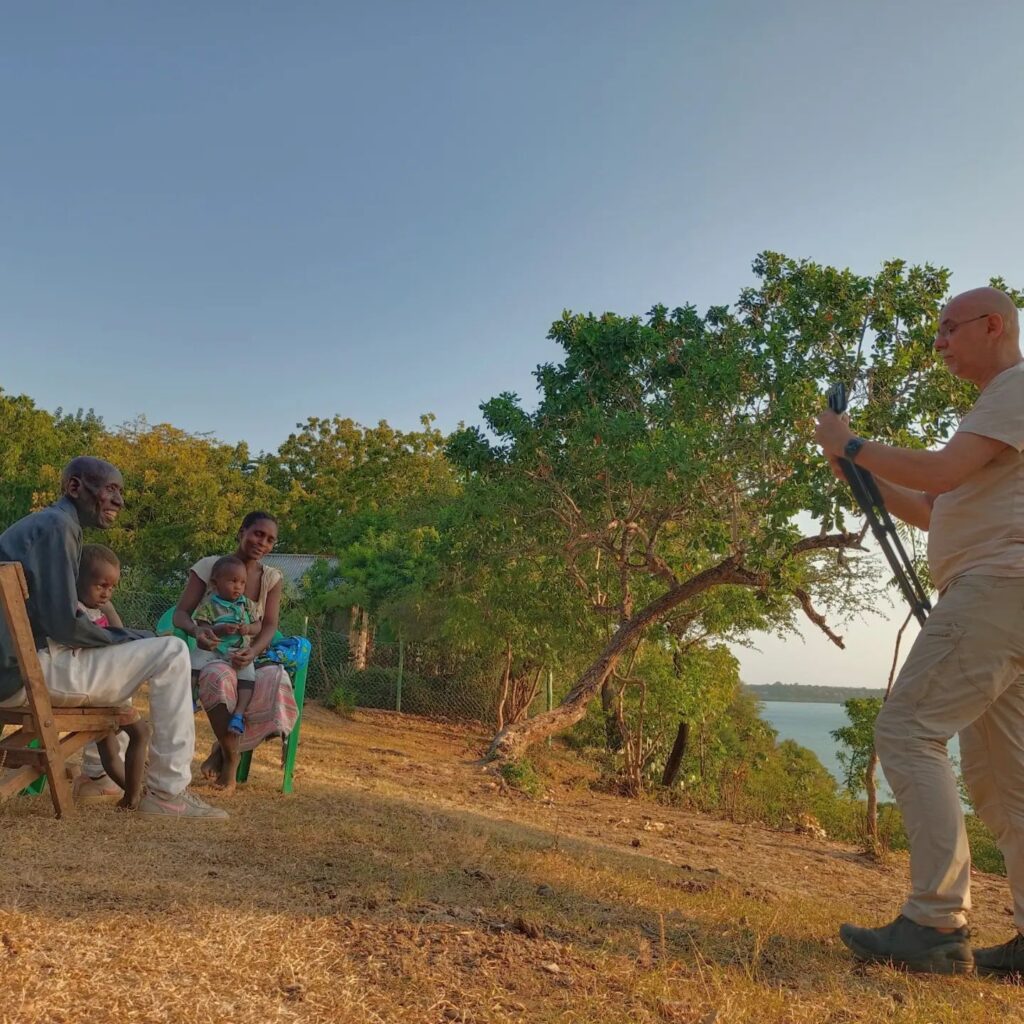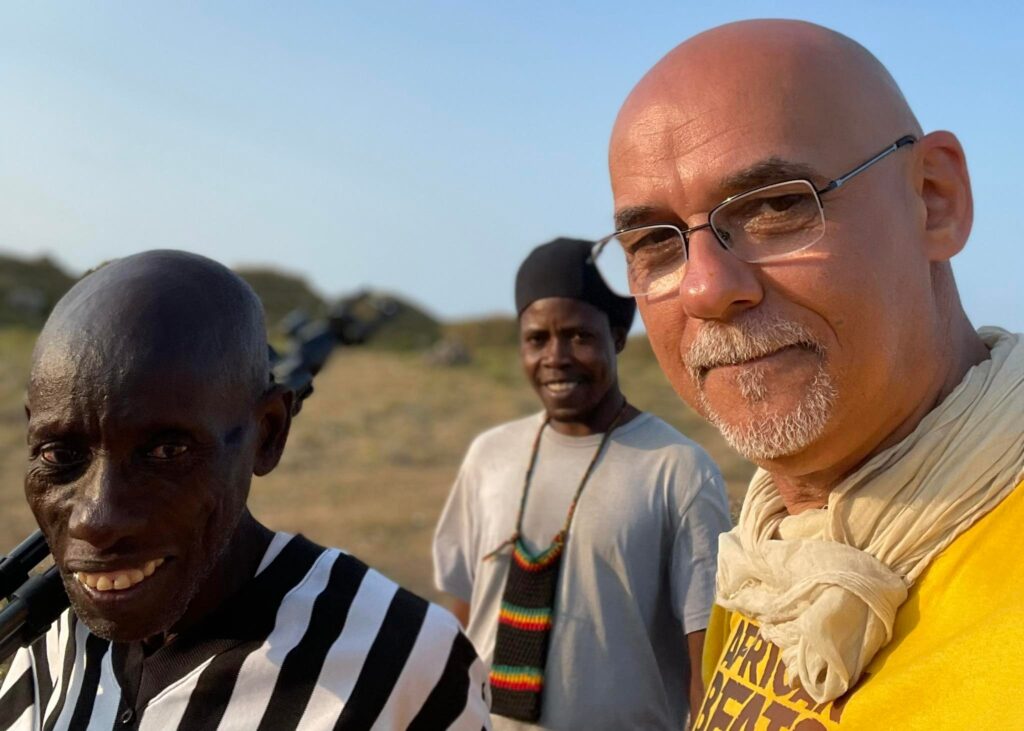Prof. Aleksandra Lukaszewicz and Dr. Grzegorz Skorny from the Academy of Art in Szczecin investigated the history of the slave trade on the Kenyan coast through the footsteps and stories of a tribal elder resident in Seahorse Village on the outskirts of Kilifi town. The result of their research is ‘History Enmeshed with Sand, in Backwaters’, a short documentary film the pair produced during research trips in July 2021 and September 2022.
Kaviha Charo Chengo, scion of a long line of mganga, or traditional healers, is the focal point of the film. The mganga maintain and dispense knowledge about the natural world among the Mijikenda tribes that populate the Kenyan Coast. While Chengo does not practice, his position as a village elder makes him a repository of tribal and regional history.
As part of the research, he led the pair to sites and ruins around Kilifi County, where Arabs in the 15th century captured slaves and prepared them for transport to the island of Zanzibar, further down the East African coast in modern-day Tanzania.
The group journeyed upriver from Kilifi Creek, through which Arabs gained access at high tide as they hunted for slaves. They passed by the Musafir, whose name means ‘traveler’ in Arabic, a replica sheltered in the Creek of the dhows, or sailing ships, that carried traders across the Indian Ocean.
Researchers explored ruins of an Arab settlement at Mnarani, now a national park, where slaves were kept in a well before being transported to Zanzibar. Chengo also brought researchers to ruins of the slave market at Takaungu, further down the coast from Kilifi town.
There, they viewed another well, where captives deemed too weak to work met their deaths. Researchers also explored caves in the Vuma Cliffs, where fugitives hid from their would-be captors.
During their visit, the beauty of the sun’s reflection on the rock and coral ruins was tempered by the excavations of Mombasa Cement, Ltd., which operates a nearby quarry. The scene reminded the research team of the many forms abuse can take and the need for constant vigilance against the threats to mankind and the environment.
Along with the travelogue, in-depth interviews with Chengo and bibliographic material supplied by Dr. Ibrahim Busolo, an expert in Coastal history from Pwani University, form the bulk of the documentary. Its aim is to commemorate the victims of the slave trade and to preserve the places of memory among County residents.
Concept and organization: Aleksandra Lukaszewicz
Video: Grzegorz Skorny
Photographs: Miroslawa Jarmolowicz
Editing: Lukasz Nyks
Featured:
Kaviha Charo Chengo
Jonathan Kahindi

